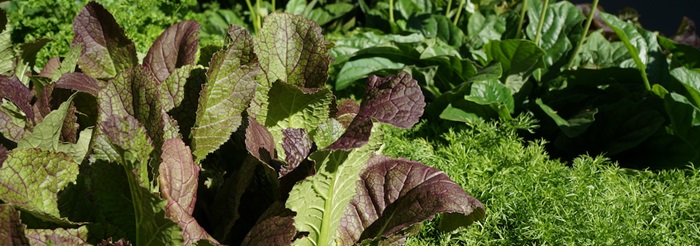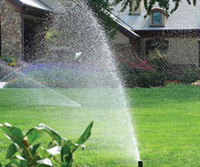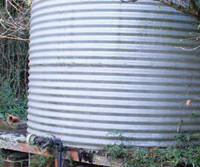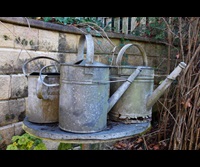
When to water
Getting it right
- It's much more effective to water at dawn than during the heat of the day when evaporation will waste a lot of the water you put on.
- If you're using a sprinkler or other irrigation system during spring, summer or autumn, you can only have them on before 9am and after 6pm (part of our Permanent Water Conservation Measures).
- Frequent, light watering encourages shallow roots, so aim for longer, less frequent watering which allows the top layer of soil to start drying out before watering again.
Ornamental trees and shrubs
Freshly planted trees and shrubs will need more watering while they become established. As the roots grow deeper into the soil, they become less dependent on water in the topsoil and irrigation becomes less important. Heavy mulching of garden beds around trees and shrubs means less need to water.
The watering requirements of shrubs and trees varies enormously from species to species. For example, many Australian or South African plants may require no additional watering once established, while many exotics demand more water than is naturally available in order to survive.
Fruit trees
The water and feeding needs of fruit trees are normally higher than ornamental plants of similar size. Mixing plenty of organic matter into the soil before you plant them will not only help the plants access nutrients, but will also help the soil retain moisture, reducing the need for watering. Keep grass and competing weeds away from root zones and mulch heavily to conserve water.
The vegetable garden
Vegetables need between 25 and 50 mm of water per week for good growth. If watering by hand or with a sprinkler, a watering about once a week so that the water soaks to a depth of about 150 mm will often be enough, repeated again when the top few mm of soil have started to dry out. A veggie garden can be effectively watered by sprinklers, microsprays or drippers, but if using sprinklers, remember the need to avoid too much water standing on foliage, particularly overnight.

Plant pots
Groups of plants in containers may be watered as a group by sprinklers or micro-sprays, but the most efficient solution is to use drip irrigation, with individual running drippers to each pot. Each dripper is fitted to the end of a piece of flexible feeder tube connected to a main polytube feeder. The flexible feeder tubes allow the pots to be moved about or changed at will. The flow rate of the drippers should be adjusted to suit the size and water needs of each plant.
Capillary pot watering enables a large number of pots to be watered simultaneously. Pots sit on a porous mat through which water is circulated, to be drawn into the pots by capillary action. This labour-saving technique is best suited to nurseries and large greenhouses, with no wastage of water through run-off.
Avoid standing pots in saucers or on a surface which may block the drainage holes or on which rainwater will collect and stand. Container plants require moisture to drain freely through the potting mix, otherwise their roots will rot. The solution can be found in small ‘feet’ which raise the pot from the surface, permitting free drainage. Water-absorbing granules mixed into the potting mix reduces the risk of plants drying out and allows longer spells between watering.

Hanging containers
Plants grown in hanging containers, particular those made of porous organic materials, are particularly vulnerable to moisture loss as well as being easily forgotten. Like other container plants, they are best watered by a system of feeder lines fixed to the overhead structure with drippers on flexible tubes running into each basket.
Discover ways to save in other areas of your garden:
|
Watering systems |
Rainwater tanks |
How much to water? |



